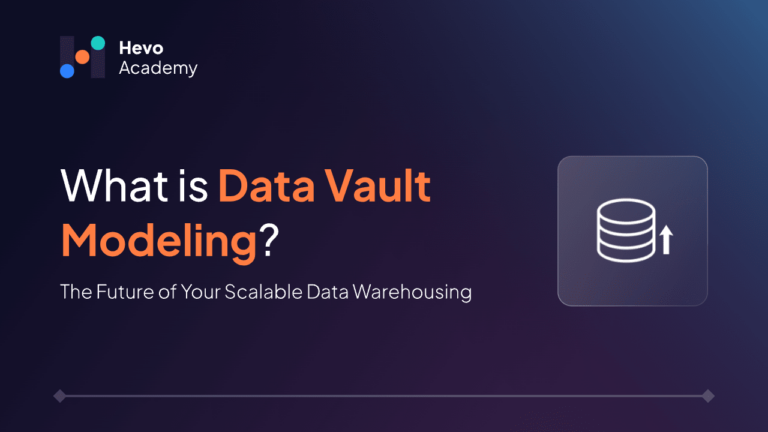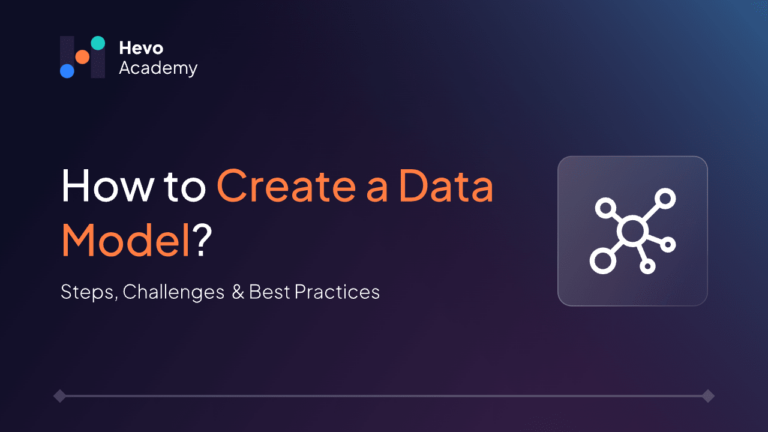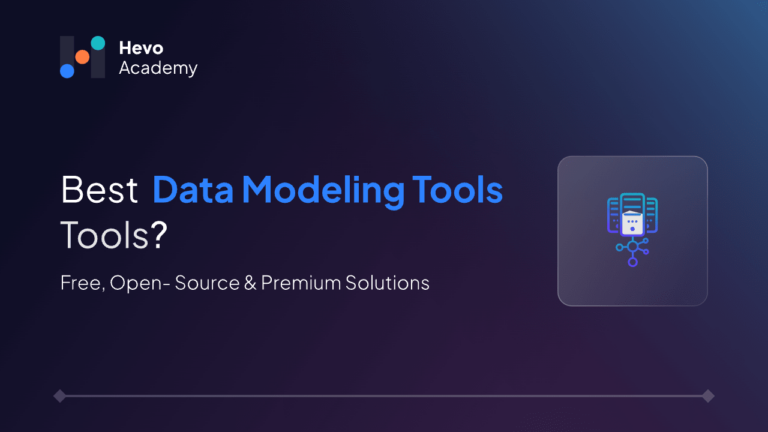You know the importance of data, and your architecture may be providing insights to enhance customer-centric products and services. But is that enough?
Table of Contents
- Are you effectively managing historical data changes?
- Can you seamlessly integrate multiple data sources?
- Is your system scalable for future needs?
These questions highlight the need for a more dependable solution in order to enhance your current structure and stay up to date with evolving technology. Data Vault Modeling provides an organized framework for capturing historical data and facilitating seamless integration of new sources. It efficiently tackles these obstacles via offering an adaptable, expandable method for data warehousing.
With Data Vault, you can build customer-centric solutions that:
- Improve data accuracy and integrity.
- Enable faster insights through efficient management.
- Adapt quickly to evolving business needs.
By moving beyond traditional methods, you’ll discover how Data Vault modeling can clarify whether your data strategy is effective and highlight areas for improvement.
By looking past conventional techniques, you will find that Data Vault modeling can help determine the effectiveness of your data strategy and pinpoint areas that need improvement.
What is meant by Data Vault?

In the data field, whether you are a data engineer, scientist, or analyst, your daily tasks primarily consist of handling large amounts of data from different sources, ensuring data quality, and adjusting to quickly changing business needs. Conventional data warehousing methods may be inflexible and take a long time to adapt to these requirements. This is where Data Vault works to:
- Adapt promptly to new business demands without needing to redo extensively.
- Effectively manage extensive amounts of data to be utilized for advanced analytics in enterprises.
- Monitor historical data changes over time by documenting them, enabling thorough auditing and adherence to regulations.
- Seamless incorporation of additional data sources without interrupting current processes.
A Data Vault is a method of data modeling designed for building flexible and scalable data warehouses. Developed by Dan Linstedt in the 1990s, it addresses the limitations of traditional data modeling techniques like third normal form (3NF) and star schemas. The primary objective of a Data Vault is to establish a consistent framework for gathering and safeguarding past data from different systems, guaranteeing that all data is preserved for analysis regardless of its quality. This method simplifies monitoring alterations and preserving historical data.
For instance, picture a retail business that gathers customer buying information from various sources such as online, in physical stores, and via mobile applications. Utilizing a Data Vault enables this company to seamlessly blend all data while preserving the transaction history.
Historical Background and Evolution of Data Vault Modeling
The emergence of Data Vault modeling coincided with challenges faced by organizations in integrating large-scale data. Older techniques such as third normal form (3NF) prioritized reducing duplication, but they frequently resulted in rigid designs that were unable to adapt to evolving business requirements. Linstedt’s method integrated the strengths of normalization and denormalization to form a hybrid model that facilitates both historical tracking and agile development.
What is Data Vault Modeling?
For your organiztion to have capability for a clear audit trail while also being flexible enough to adapt to new requirements as they arise. Thats how data vault modelling came into being.
To define Data Vault Modeling, you can think of it as a methodology that breaks down data into three main components: Hubs, Links, and Satellites.
- Hubs: They stand for essential business entities (such as customers or products) and keep distinct identification codes.
- Links: Capture relationships between Hubs (e.g., which customers purchased which products).
- Satellites: Hold descriptive information about Hubs and Links over time (e.g., customer details or product specifications).

Significance of Data Vault Modeling
Data Vault Modeling offers a thorough answer for handling intricate data settings. Data Vault enables incremental updates, rather than needing extensive restructuring for changes as in conventional models. Adding new Hubs or Links no longer requires a complete system overhaul. This method provides a robust structure that boosts data management abilities, guaranteeing adaptability and expandability as your business expands.
3 Entities of Data Vault Modeling
The three entities of Data Vault modeling—Hubs, Links, and Satellites—works together to establish a dependable structure for managing data. Let’s examine how to uphold a broad perspective with these entities.
Hubs
Hubs represent the core business entities within your organization. They capture unique identifiers for essential business concepts.
Such as,
- Customer ID: A unique identifier for each customer in your system.
- Product Number: A unique identifier for each product offered by your organization.
For instance, in a retail company that tracks its customers and products. The Customer ID and Product Number would be stored as Hubs, allowing the company to easily reference and manage these core entities without duplication.
Links
Links capture the relationships between different Hubs, illustrating their interactions. This is crucial for understanding connections between various business entities.
Such as,
- Customer Orders: A Link that connects customers to the products they have purchased, showing which customers ordered which products and when.
For instance, in a retail scenario, a Link might represent the relationship between a specific Customer ID and the corresponding Product Numbers they have ordered. This enables the company to analyze purchasing patterns and customer behavior effectively.
Satellites
Satellites provide contextual information about Hubs and Links, capturing attributes that describe these entities over time. They are essential for maintaining historical records and understanding changes in data.
Such as,
- Customer Details Over Time: Includes information such as customer names, addresses, and contact details that may change over time.
For instance, in our retail domain, a Satellite could store historical data related to a Customer ID, such as changes in their address or contact information. This allows the company to maintain an accurate history of customer interactions and transactions.
Benefits of Data Vault Modeling
To improve your existing data management capabilities while staying agile in a continuously changing business environment, consider Data Vault modeling. Its benefits—scalability, flexibility, historical tracking, and simplified ETL processes—make it an effective solution.
Wondering how? Let’s dive in:
- Scalability to Handle Large Volumes of Data to easily scale as your data grows, without performance degradation. Introducing new Hubs, Links, and Satellites as needed allows you to expand your data model without disrupting existing structures.
- Tip for enhancement: Regularly assess your data sources and plan for integration in advance to ensure smooth scalability.
- Flexibility to Adapt to Changing Business Needs as its modular structure allows organizations to quickly adapt their data models in response to evolving business requirements. You can add or modify components without extensive rework, facilitating quick integration of new data sources.
- Tip for enhancement: Maintain clear documentation of your data model and business rules to facilitate quick adjustments when changes arise.
- Improved Historical Tracking and Auditability to maintain complete history of changes, essential for trend analysis and compliance. By storing historical data in Satellites captures every change over time.
- Tip for enhancement: Implement automated processes for monitoring data lineage and changes to enhance traceability and accountability.
- Simplified Extract-Transform-Load (ETL) process allows you to load raw data directly into the vault before applying transformations. This approach reduces dependencies between data loading and transformation steps, streamlining the overall process.
- Tip for enhancement: Utilize automation tools like dbt or Wherescape to optimize your ETL workflows and minimize manual errors.
Data Vault Architecture
While on a journey to upgrade your existing systems to consider data vault architecture, you might be thinking on:
- Is Data Vault architecture suitable for my organization?
- Can I integrate it with my current data systems?
- Will it help with historical tracking and compliance?
Well, Data Vault can seamlessly coexist with traditional data models, allowing for incremental improvements without requiring a complete overhaul of your existing systems. This adaptability makes it an attractive option for organizations looking to modernize their data architecture while minimizing disruption. It addresses common challenges faced by data professionals, such as integrating diverse data sources and adapting to changing business needs.

Architecture Layers: Raw Data Vault, Business Data Vault, and Presentation Layer
Data Vault architecture consists of three primary layers:
Raw Data Vault:
This layer stores raw, historical data from various sources in its original format. It captures all incoming data without filtering or transformation, ensuring that every piece of information is retained for future analysis.
- Purpose: To provide a comprehensive repository of unprocessed data that reflects the state of source systems at any given time.
Business Data Vault:
In this layer, the raw data is transformed and organized into a more structured format that aligns with business needs. It harmonizes business terms and applies additional logic to ensure consistency and compliance.
- Purpose: To create a more accessible and usable version of the raw data that meets specific analytical requirements.
Presentation Layer:
This final layer delivers the processed data to end-users through dashboards, reports, and other visualization tools. It often includes dimensional models like star schemas for efficient querying.
- Purpose: To present the data in a user-friendly format that supports decision-making processes across the organization.
What is Data Vault 2.0?

While Data Vault offers a robust framework for data management, it has certain limitations like:
- increased complexity due to numerous tables and joins,
- potential data integrity issues with raw data, and
- significant initial setup time and cost.
These obstacles emphasize the necessity for a more advanced method, which is where Data Vault 2.0 steps in.
Data Vault 2.0 tackles these issues by
- streamlining the design to minimize superfluous joins and tables,
- improving data integrity with enhanced validation procedures, and
- expediting implementation with automation tools.
This evolution makes Data Vault 2.0 a more efficient and reliable methodology for capturing and storing historical data from multiple sources using its three main components: Hubs (core business entities), Links (relationships between those entities), and Satellites (contextual information about the entities).
For instance, a retail company collects customer purchase data from various channels—online, in-store, and mobile apps.
Now if you implement a traditional Data Vault model, yuo would create Hubs for customers and products, Links for customer orders, and Satellites for customer details. However, as new data sources emerge (like social media interactions), integrating them requires significant rework, leading to delays and potential inaccuracies in reporting.
This is where, Data Vault 2.0, still create Hubs, Links, and Satellites but benefit from automation tools that allow them to quickly integrate new sources without disrupting existing structures. The model easily adapts to changes in source systems, ensuring that all relevant data is captured accurately and efficiently.
How Data Vault Solves Key Enterprise Data Warehouse Challenges
Sometimes, there might be issues hindering your ability to leverage data effectively. In this section, we dive deep into some of the prominent challenges:
Challenge 1: Difficulty in Managing Historical Data Changes
Conventional data warehouses typically replace previous data with updated details, complicating the ability to monitor past modifications and patterns.
How Data Vault Solves It?
The main purpose of Data Vault is to store a full historical log of every change in data. Each change is documented as a fresh record in the correct Satellite table, including timestamps. This guarantees that no historical data is forgotten.
- Quick Tip: To further improve historical tracking, implement regular audits of your data entries. This helps ensure that the historical records remain accurate and reliable over time.
Challenge 2: Complexity in Integrating Multiple Data Sources
Integrating diverse data sources can be complex and time-consuming, often leading to inconsistencies and errors.
How Data Vault Solves It?
Data Vault’s modular structure allows for easy integration of new data sources without disrupting existing workflows. By using Hubs for core entities and Links for relationships, organizations can seamlessly connect disparate data streams.
- Quick Tip: Establish clear guidelines for data integration processes. Regularly review and update these guidelines to accommodate new sources and technologies as they emerge.
Challenge 3: Scalability Issues with Traditional Models
Many traditional data models struggle to scale effectively, leading to performance bottlenecks as data volumes increase.
How Data Vault Solves It: Data Vault is inherently scalable due to its design. Organizations can add new Hubs, Links, and Satellites independently, allowing them to handle increasing amounts of data without compromising performance.
- Quick Tip: Plan for future scalability by regularly assessing your data architecture. Consider adopting cloud-based solutions that can easily scale with your needs.
Challenge 4: Need for Agility in Responding to Business Changes
Businesses often need to pivot quickly in response to market changes, but traditional models can be rigid and slow to adapt.
How Data Vault Solves It? The flexibility of Data Vault allows organizations to modify their data models rapidly. New business requirements can be addressed by adding or adjusting components without extensive rework.
- Quick Tip: Foster a culture of agility within your data teams. Encourage regular training on best practices and emerging technologies to ensure that your team is prepared to adapt quickly.
Conclusion
Advancements in the tech industry are inevitable. To stay competitive, your organization must move beyond traditional data warehousing approaches, which often lead to issues with scalability, flexibility, and data integrity. Data Vault offers a structured framework for capturing historical data while seamlessly integrating new sources. With Data Vault 2.0, enhancements like automation and real-time data processing empower organizations to respond swiftly to changing business needs.
Effective Data Vault implementation relies on robust data integration strategies; tackling this complexity alone can hinder performance and accuracy. The professionals at Hevo Data specialize in managing your data integration process, allowing you to focus on analyzing data and making informed decisions.
Connect with us now to transform your data integration experience and maximize the potential of your data!
FAQs
How Data is Stored in a Data Vault?
A Data Vault stores data using three primary components: Hubs, Links, and Satellites.
– Hubs are essential business components such as customers or products that hold distinct identification keys.
– Links between Hubs establish connections and display associations like the products purchased by specific customers.
– Satellites store detailed data on Hubs and Links, such as customer names and product details, while also monitoring changes over time and preserving all information.
Does Data Vault fall under the category of Graph Databases?
A Data Vault is not a form of graph database. A graph database utilizes nodes and edges to depict and save connections among data points. Data Vault employs Hubs to depict entities and Links to depict relationships, enabling historical tracking and scalability.
Does the Data Vault serve as a Data Lake?
A Data Vault is not equivalent to a data lake. A Data Lake retains unstructured raw data without any form of organization in its native form. On the other hand, data is structured into Hubs, Links, and Satellites within a Data Vault to simplify analysis and reporting.
What do the Data Vault Architecture Layers consist of?
Data Vault architecture consists of multiple layers.
– The collection of raw data from different sources takes place in the ingestion layer.
– Organizing raw data involves categorizing it into Hubs, Links, and Satellites within the curation layer.
– Data is prepared and modified for analysis in the transformation layer.
– Data is presented to users through reporting tools and dashboards as seen in the presentation layer.




